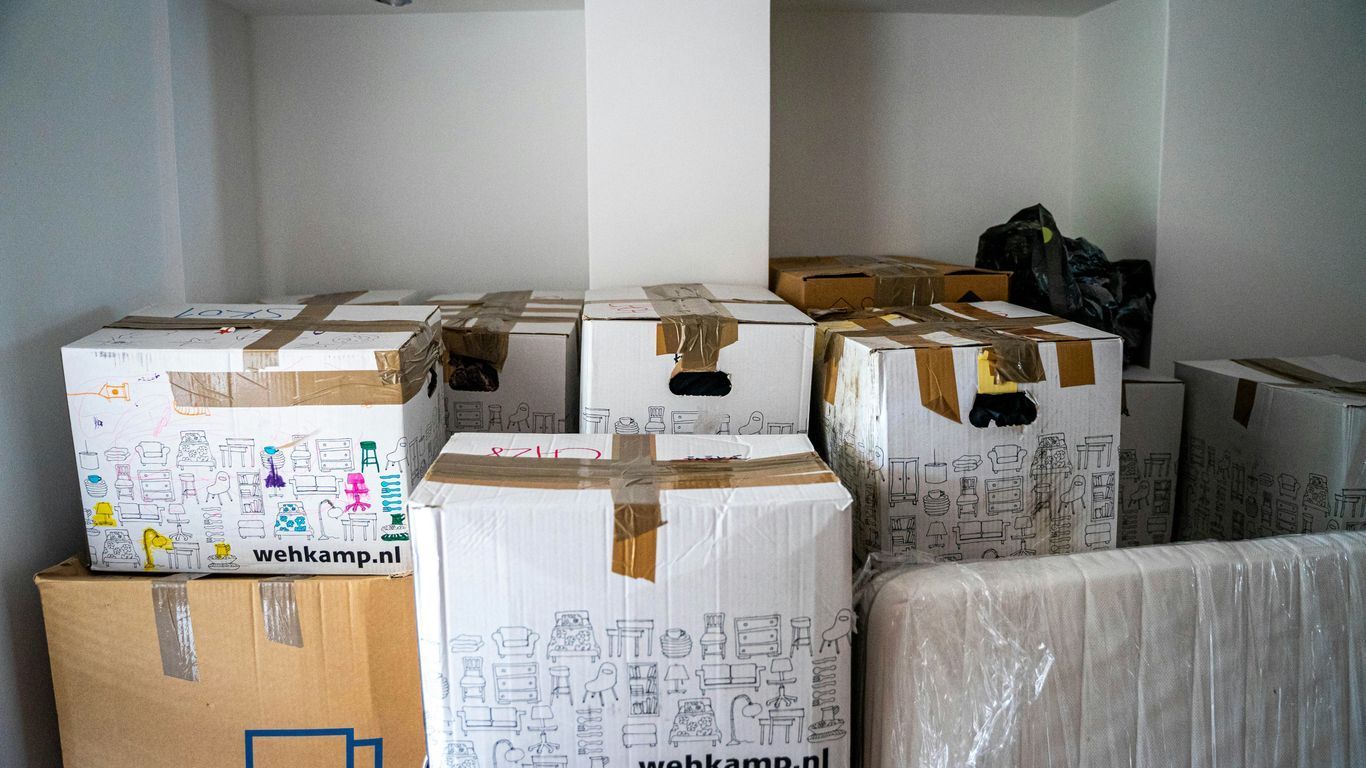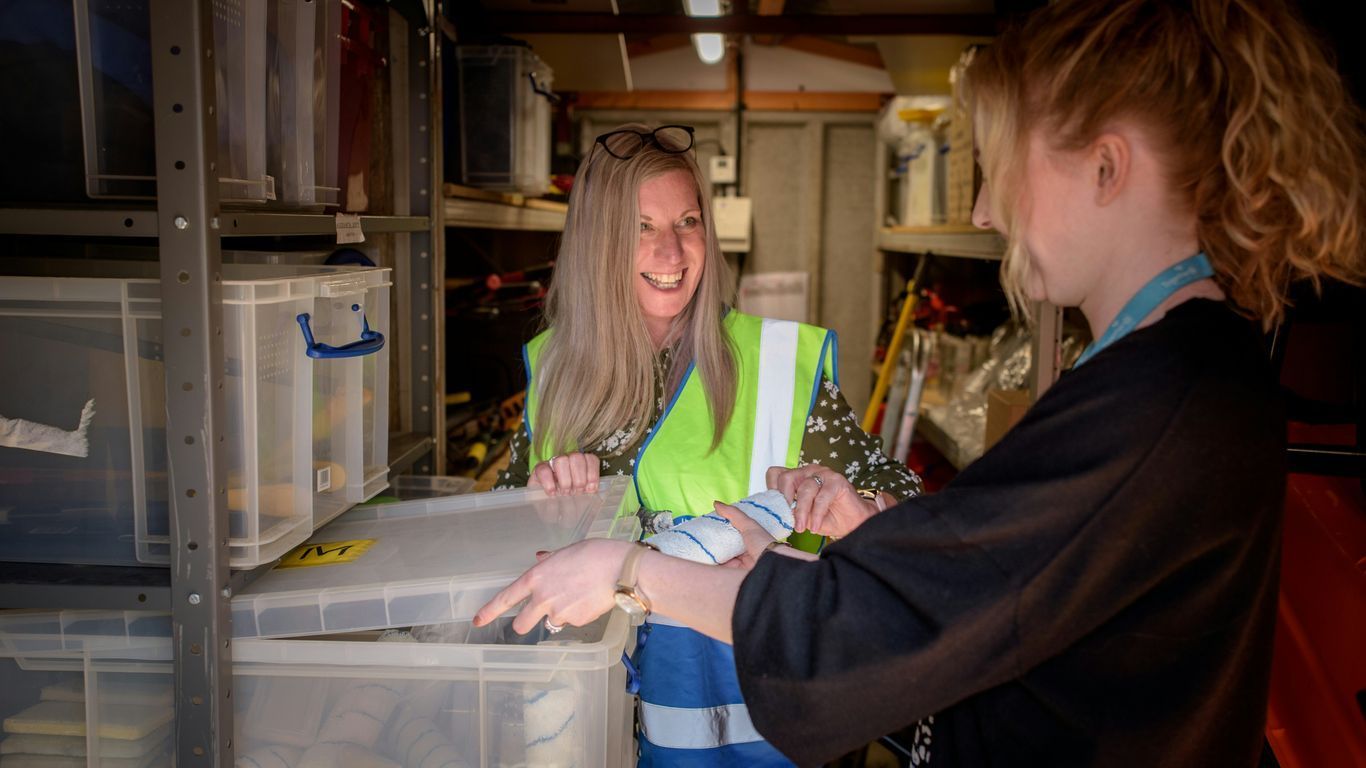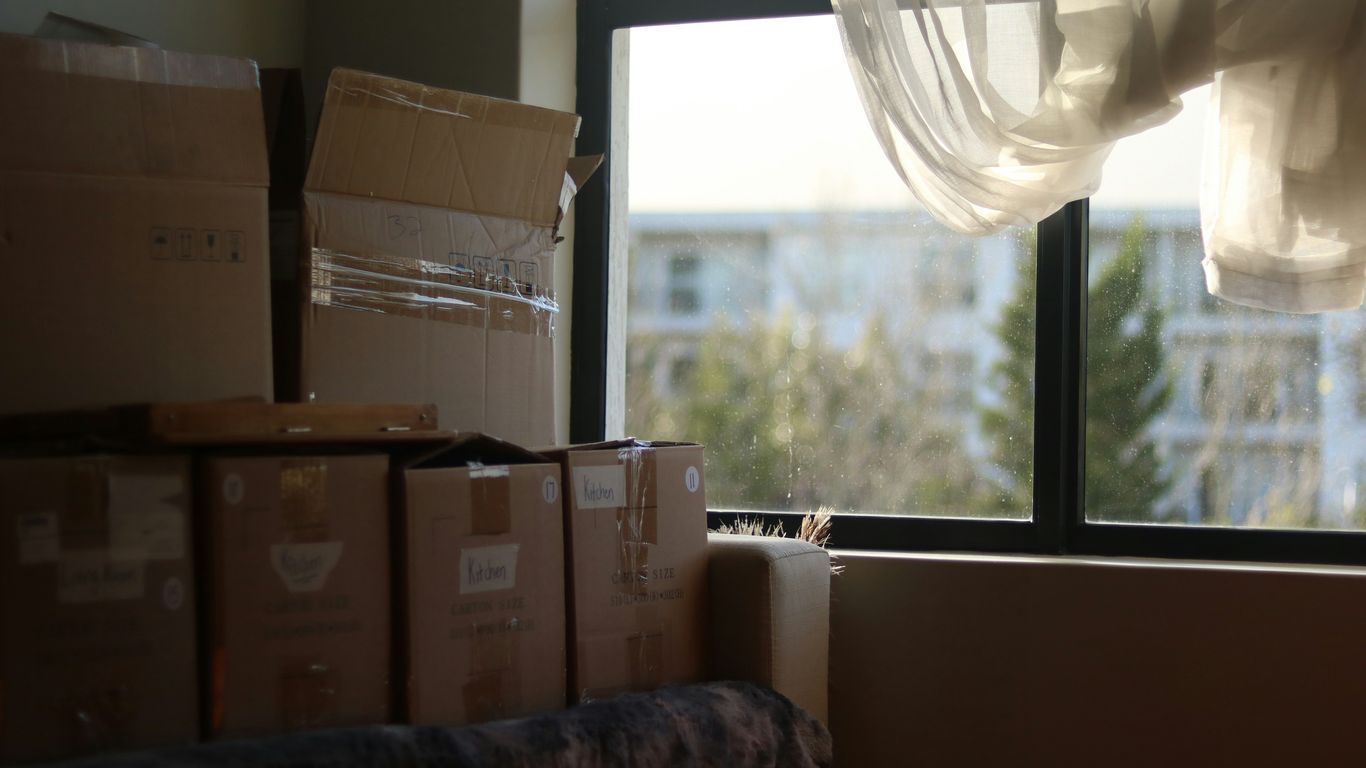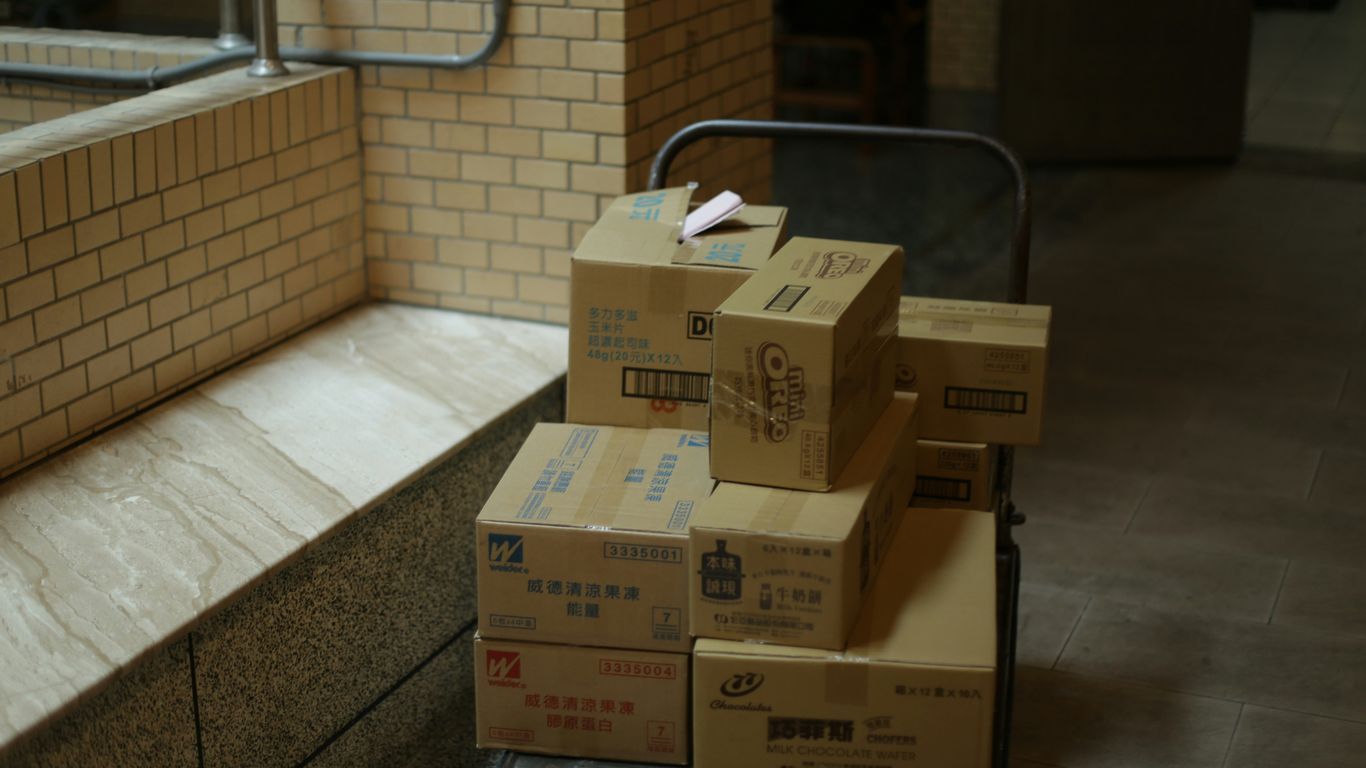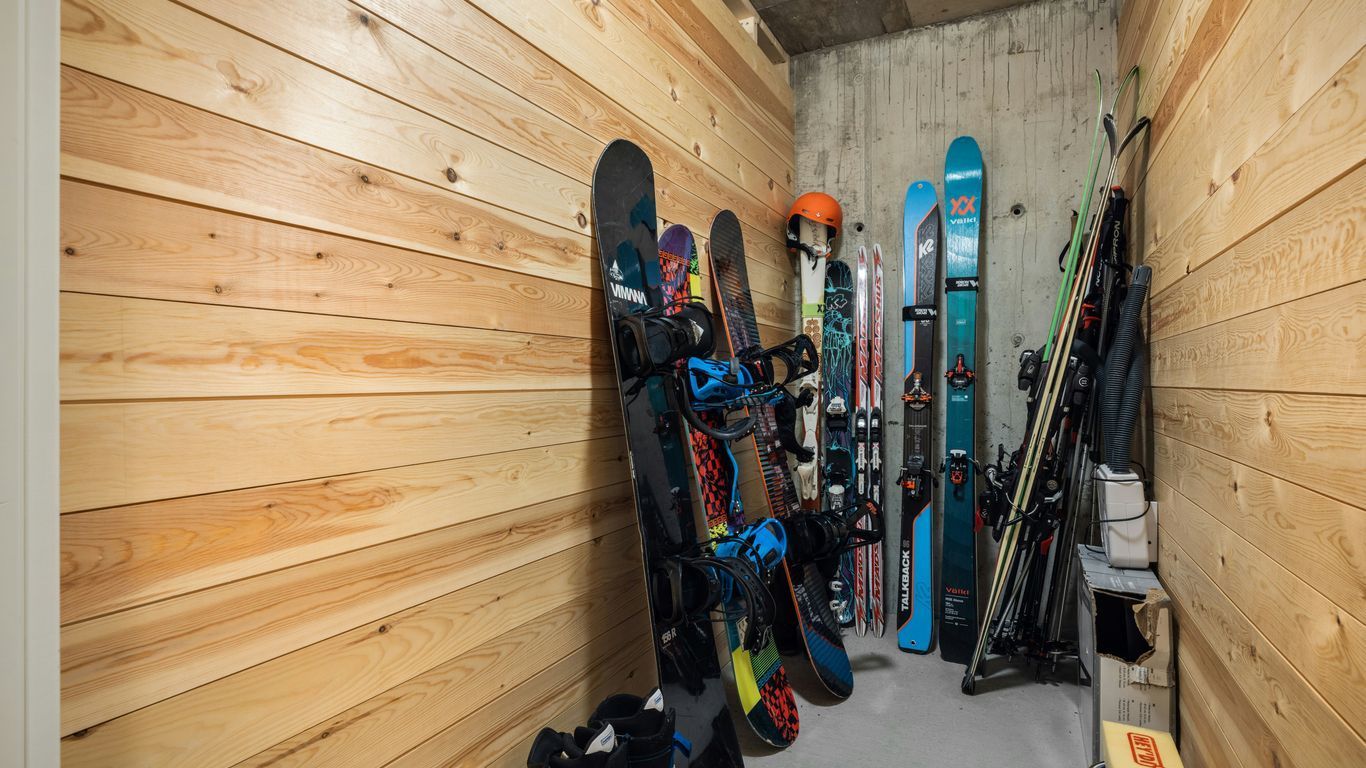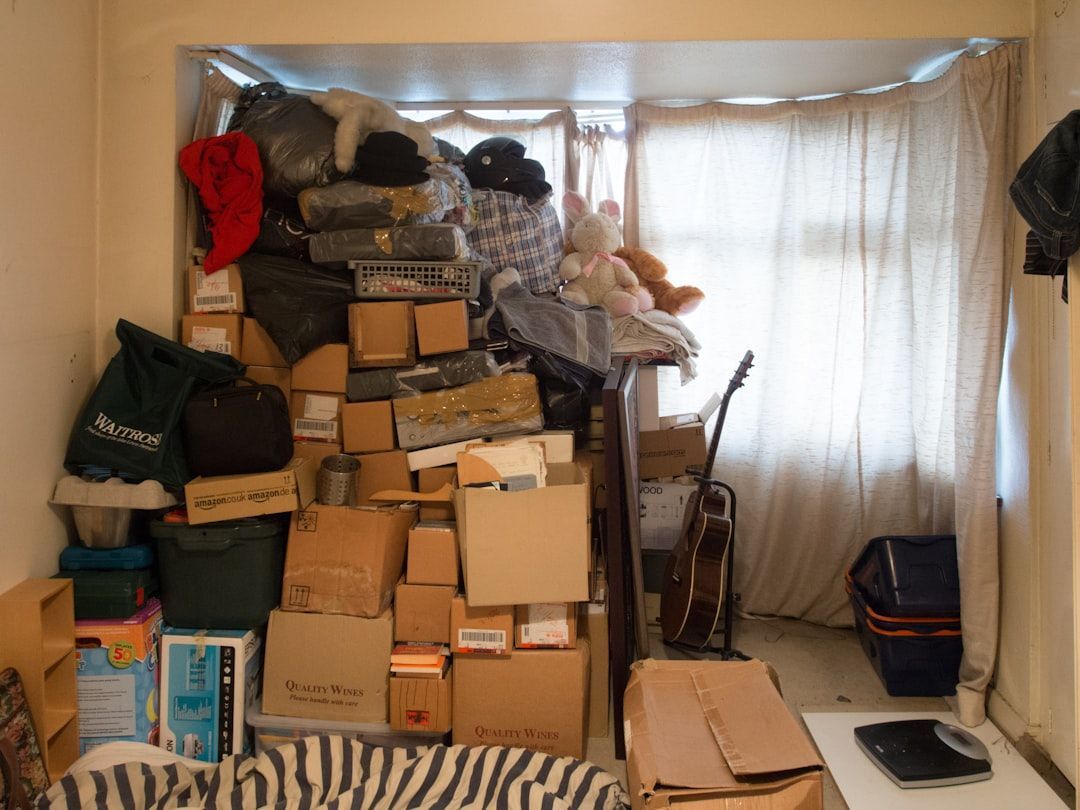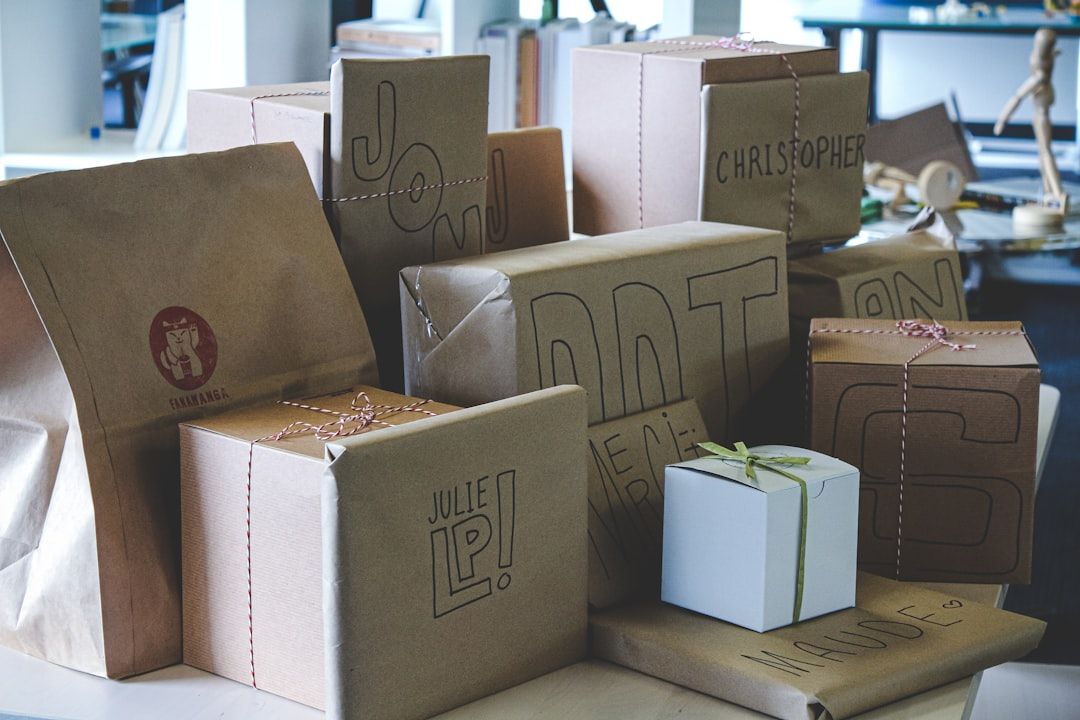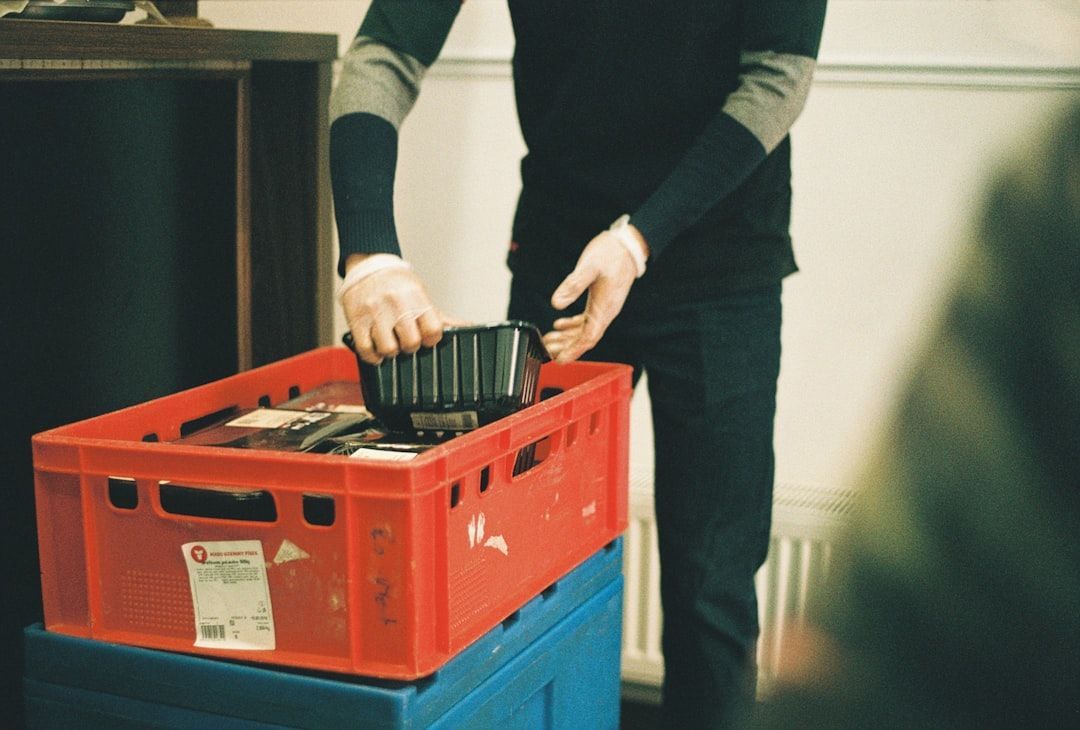Relocating for Work? How Temporary Storage Can Bridge the Gap
Moving for a new job can be exciting, but it’s rarely simple. Sometimes your move-out and move-in dates don’t line up, or maybe you’re waiting on your new place to be ready. That’s where temporary storage for relocation comes in handy. It’s a way to keep your stuff safe and out of the way while you figure things out. Whether you’re headed across town or across the country, having a storage plan can really lower your stress and help you stay organized during all the chaos.
Key Takeaways
- Temporary storage for relocation is a flexible option when your moving dates don’t match up.
- You can choose from self-storage units, portable containers, or full-service storage depending on your needs and budget.
- Short-term storage is helpful for all kinds of moves—local, long-distance, work assignments, or even military relocations.
- Make sure to consider security, climate control, and access when picking a storage solution.
- Comparing prices and understanding contracts can help you avoid surprise fees and save money during your move.
Understanding Temporary Storage for Relocation
What Counts as Temporary Storage?
Temporary storage is just what it sounds like—a place to stash your stuff for a short period while your living situation is in flux. It could mean a month, a couple weeks, or even a handful of days. Usually, you’re not locking your belongings away and forgetting about them for years. Instead, you’ll get your items back once your new home or rental is actually ready.
Some of the most common types of temporary storage include:
- Portable storage containers (like PODS or U-Haul U-Box)
- Traditional self-storage units
- Storage warehouses managed by moving companies
Short-term storage pops up all over the place, from those metal storage complexes on the edge of town to big moving companies that’ll hold your stuff until you call for it.
When Do You Need Temporary Storage Solutions?
Needing a spot to put your things for a little while can happen for more reasons than you’d think.
- The timing between move-out and move-in doesn’t match up just right (which it never seems to)
- Renovations are making your new or old home unlivable
- Your company sends you to a new location for a project or temporary assignment
- Downsizing, selling or prepping a home, and you need to clear out for a bit
- School breaks or military relocations (because life moves fast and plans change)
When your belongings don’t have a place to land, temporary storage is often the lifeline that keeps your life moving forward.
Key Benefits of Short-Term Storage During a Move
Short-term storage isn’t just about having somewhere to put your boxes. There are more upsides than people realize:
- It buys you time. Instead of rushing into a decision or living surrounded by cardboard, you can store your stuff until you’re settled.
- Stress drops—at least a little. It’s easier to coordinate move-out and move-in dates knowing your things have a safe place.
- Many storage options have flexible terms—month-to-month, no long commitment, sometimes you can even extend with a quick call if your plans get messy.
- Reduces the effort of double-moving. With portable containers, for example, your items stay packed until they get delivered to your new address.
It’s not always fun to spend money on storage, but sometimes it’s the only way to keep your move—or your sanity—on track.
Choosing the Right Temporary Storage Solution for Your Move
Finding the best temporary storage for your move isn’t simple—different solutions fit different needs, and picking the wrong one can waste money or make things harder. Let’s break down the main options and what sets them apart.
Portable Containers vs. Self-Storage Units
Portable storage containers, like U-Box portable storage, are shipped right to your front door. You load your stuff at your pace, and when you're done, the company moves it to a storage location or directly to your new place.
- Load and unload from your driveway without a rush.
- Flexibility for unpredictable schedules—these containers double as moving trucks and storage.
- You may need a parking permit or HOA approval for containers on the street.
Self-storage units mean driving your things to a storage facility yourself or with movers. Sizes and features vary—locker-sized to garage-sized, some with climate control.
- Many choices for unit sizes and price points.
- You handle getting everything in and out, which can mean more effort and trips.
- Access depends on facility hours—some have 24/7 access, others have set times.
If you’re overwhelmed by moving day, portable containers keep things simple by letting you load and go on your own timeline. Self-storage can save money if you have a truck and don’t need door-to-door service.
On-Site and Off-Site Storage Options Explained
Where you keep your stuff makes a real difference. On-site storage means the portable unit stays at your current or new home. Off-site means it’s stored at the company’s warehouse.
- On-site is good when you want easy, daily access to your belongings.
- Off-site works if you’re in temporary housing, out of space, or don’t need daily access.
- Mobile storage units can transition from on-site to off-site if your plans change—helpful if your move-in date gets pushed.
Costs may go up for long-term on-site storage, especially if you need city permits. Think about how often you’ll need access and if your neighborhood allows containers to sit in your driveway or on your street.
Full-Service Storage: When Movers Handle Everything
If you don’t want to lift a finger, full-service storage is an option. Movers pack everything, haul it to a storage warehouse, and then deliver it once your new home is ready.
- Professionals do all the loading, moving, and storage.
- Usually available from moving companies, especially for cross-country or long-distance moves.
- Downsides: Access to your stuff is limited. You’ll have to wait for delivery—no popping in for that box you forgot.
Full-service storage makes sense for people moving far, handling big moves, or who want a no-fuss approach. You pay more, but your time and energy might be better spent on adjusting to your new town.
When picking a storage option, really think about your timeline, how much help you want, and whether staying hands-on will actually save you headaches. There’s no right or wrong—just what works best for your next big move.
How Temporary Storage Simplifies Work Relocations
Bridging the Gap Between Move-Out and Move-In Dates
Sometimes, your job needs you to start in a new place fast—but housing isn’t keeping up. Maybe your old lease ends before your new home’s ready, or you’re juggling closing dates. In those situations, temporary storage has your back. It lets you safely stash your furniture, boxes, and clothes during that in-between period, instead of begging friends for garage space or tripping over boxes in a short-term rental.
- No need to move everything twice—one load into storage, then out at your new address.
- Less anxiety about where everything will go while waiting for keys, renovations, or paperwork.
- Easy access to your stuff if you suddenly need something from your unit.
Having a place to put your things—even just for a few weeks—can make starting a new job less overwhelming. It’s one less detail to worry about as you adjust to major changes.
Solutions for Company Relocations and Temporary Assignments
When work sends you to another city (or even a different state), you might not want to haul everything right away. Maybe it’s a few months in a corporate rental, a short-term project, or your employer is helping with a staged relocation. Portable storage containers or secure warehouse units can step in so your personal items stay protected, but close if you need them. For example, portable containers provide breathing room as you figure out your next steps, letting you acclimate to your new space before unpacking and setting up essentials.
- Employees with company-paid moves can store goods until permanent housing is sorted.
- Ideal for testing out a new city or temporary apartment without giving up all your comforts.
- Makes it simple to keep business files, decor, and larger items on hold if you’re in flux.
Flexibility for Unpredictable Moving Timelines
Schedules for corporate moves are rarely simple. Delays in paperwork, job start dates, or even finding the right home mean your plans can change at any moment. Short-term storage does not lock you into long-term contracts; month-to-month options let you extend, shorten, or swap units without much hassle.
- Add or remove storage time as your move situation shifts.
- Swap between on-site and off-site storage for extra convenience.
- Budget better and stress less by knowing you have a storage backup if plans change.
Getting flexible storage helps anyone relocating for work stay calm. You may not control every aspect of your move, but you can make sure your stuff waits for you safely—at your own pace.
Factors to Consider When Using Temporary Storage for Relocation
When you’re in the middle of a work move, it’s easy to get overwhelmed by all the details. Picking the right temporary storage isn’t just about finding an empty space for your boxes—it’s about making sure your stuff stays safe, accessible, and within your budget. Let's get into the specifics that can really make or break your moving experience.
Security and Accessibility of Your Belongings
Not all storage options offer the same level of protection or convenience. While some places have gated access, cameras, and around-the-clock staff, others may be more basic. Accessibility also counts: do you need to grab something late at night, or is business-hours-only fine for you? Check how you’ll get in, whether you can get 24/7 access, and if there’s a process for letting visitors in. Even something as simple as having your own lock versus using one provided by the facility can matter.
- Gated entry and surveillance for extra peace of mind
- Personal locks and individual unit alarms for added security
- 24/7 access versus restricted business hours
- On-site staff presence
It’s worth the time to visit the facility before signing a contract—sometimes seeing it in person is the only way to know you’ll be comfortable storing your goods there.
Climate Control and Weather Protection
Weather can be unpredictable, especially if you’re moving during rainy months or in extreme climates. Your belongings can take a beating from moisture, humidity, and wild temperature swings if the storage unit isn’t climate-controlled. Sensitive items like electronics, wooden furniture, or important documents are best kept where both temperature and humidity are steady.
- Ask about climate control options—some units are just basic sheds, others have full HVAC.
- Double-check for water-resistant construction and regular maintenance (leaky roofs are not your friend).
- If you need to store items long-term, climate control becomes even more important.
Cost, Contracts, and Hidden Fees
Temporary storage pricing can get complicated. Sure, the base price may look good, but what about all the extras? Think about deposit fees, insurance, or charges for changing your move-in date. Some storage places offer clear month-to-month contracts, but others lock you in for longer than you expect or add penalties for early move-out. Always get a full breakdown of what you’re expected to pay—surprise costs sting the most when you’re already stressed. For example, if you’re in Campbellsville, you might want to compare options at Green Locker Storage since they offer flexible, month-to-month leases and climate-controlled units, which could help keep the budget steady.
- Always read the contract carefully for minimum terms or notice periods
- Look for extra charges like administration or access fees
- Search for deals for first-time renters or short-term users
A phone call to clarify rates and terms can save you big headaches later if your timeline changes unexpectedly, or if you end up needing extra space.
In the end, the best storage is the one that fits your specific moving situation, keeps your stuff safe and accessible, and doesn’t mess up your relocation budget. Moving is hard enough—temporary storage ought to make it easier, not more complicated.
Practical Tips for a Smooth Temporary Storage Experience
Packing and Organizing Items for Storage
Packing for short-term storage isn’t the same as boxing up for a regular move. You need to think about accessibility and protection, since you might grab something out of storage before you fully settle in. Start by creating a basic inventory—it doesn’t need to be fancy, just a simple list so you know what’s packed away. Use sturdy boxes that stack well, and clearly label every side in large writing (not just the top).
- Place frequently needed items near the front of your storage space.
- For fragile stuff, wrap and cushion well; avoid stacking heavy items on top.
- If you go with a provider like portable containers or short-term units, pack room-by-room to keep things organized for the unpack.
Give yourself room to maneuver in the unit—leave a small aisle if you can, so you aren’t emptying the whole place every time you need a single box.
Coordinating with Moving Companies
If you’re hiring movers, talk with them in advance about your storage arrangement. Some companies offer moving and storage as a bundle, which can save you time and trouble compared to managing separate services. Let your movers know about any access requirements—the difference between on-site and off-site storage matters here. Many providers need advance notice for drop-offs or pick-ups, so don’t assume it can all happen same-day.
Here’s what usually works best:
- Ask about options if your move-in date is uncertain or if you’ll need redelivery on short notice.
- Confirm who’s responsible for moving items between storage and your final place.
- Clarify storage facility hours for access, or appointment requirements.
Accessing Your Items During Storage
You never know what you’ll need during a transition, so don’t make your stuff impossible to reach. When you’re using a temporary storage facility, be sure to understand their rules about access—some have extended hours, others are pretty strict. With mobile storage, it might mean booking a visit in advance.
- Keep an updated list of what’s packed (and where) to avoid digging through everything.
- Store important documents, tools, or the odd kitchen item in their own box at the very front.
- Before you sign any contract, double-check how and when you can reach your belongings—nobody wants to get locked out of their own stuff.
Temporary storage can really make moving less stressful—if you do a little planning and keep lines of communication open with storage providers and movers, things tend to go a lot smoother.
Cost-Effective Approaches to Temporary Storage for Relocation
Relocating often means juggling a tight budget, so picking the right storage solution can really help you cut costs. Even small savings on storage fees and moving logistics can add up fast, especially when your move is bigger or has a lot of moving parts. Here's how you can keep more money in your pocket while keeping your things safe and accessible during a work-related move.
Comparing Prices and Providers
Shopping around for temporary storage is more than just comparing monthly rates. You want to match your needs with the best combination of price, access, and service. Here’s how you can approach it:
- Get at least three quotes from storage companies that cover both storage and moving, like flexible services from Six Moving.
- Check for move-in specials or discounts—some offer one free month or waivers of certain fees for new customers.
- Ask for all-inclusive quotes. Some companies sneak in charges for things like after-hours access, insurance, or mandatory locks.
- Read customer reviews and ask your network for recommendations, especially if you’ll be storing items away from your new home.
Sometimes it’s better to pay slightly more for a reliable provider that takes care of your items and moves everything on time, rather than risk delays and hidden costs with a bargain-basement option.
Minimizing Storage and Moving Costs
You don’t have to take the most expensive route to get your stuff from one place to another. Consider these strategies to trim your storage and moving expenses:
- Declutter before you pack. The less you store, the smaller (and cheaper) your unit can be.
- Choose off-peak moving dates if possible—storage and moving fees are often lower on weekdays or outside of summer months.
- Opt for portable containers if you want less double-handling and more control, but remember to calculate additional fees for drop-offs and storage periods.
- Share larger units with a colleague if you’re both relocating to the same city, but make sure to label everything to avoid mixing items.
- Reuse boxes and packing supplies whenever possible to avoid buying all new materials.
Budgeting for Short-Term and Interim Needs
Even if your company promises reimbursement or a moving stipend, you’ll want to budget upfront to avoid financial surprises.
- Create a simple spreadsheet to track your storage payments, deposit, and any access/additional fees.
- Set aside extra funds for at least one month beyond your planned move-in date—unexpected delays happen.
- Compare bundled services (storage + moving + packing) against DIY combinations—sometimes a package deal actually saves more.
Temporary storage isn’t just a place for your things—it’s a budget buffer when your move doesn’t go as planned. Prepare for those little extra costs so you don’t get caught off-guard.
Special Moving Scenarios That Benefit from Temporary Storage
Not every move is the same. Some situations demand a different approach, and that’s where short-term storage really proves itself. Certain types of relocations come with special challenges—timing, distance, and unpredictability mean you can’t always go straight from point A to point B. Here’s a closer look at scenarios where temporary storage isn’t just helpful; it’s almost a necessity.
Cross-Country and Long-Distance Moves
Taking your life across state lines or across the country? This kind of move can’t always be wrapped up in a weekend. There might be days (or weeks) between leaving your old home and getting keys to your new one. Temporary storage steps in to safely hold your stuff until you’re settled. Some moving companies even offer combined moving and storage options, but the tradeoff is you might lose regular access until delivery. For many, that’s a small sacrifice for safe, flexible storage on a big move.
- Your belongings are protected while you travel or wait out paperwork delays.
- You won’t have to stress about overlap between move-out and move-in dates.
- Some services pick up, hold, and redeliver everything so you only pack and unpack once.
Moving far from home is never simple, but placing your things in temporary storage gives you a buffer if travel takes longer than expected or housing falls through at the last second.
Military, Student, and Business Relocations
Certain groups deal with transitions more often, and timing is nearly always unpredictable.
- Military relocations can happen with little notice and orders might change at any time. Month-to-month storage contracts are popular because they don’t lock you in.
- For college students, moving everything out every summer isn’t practical—short-term storage makes sense during breaks, internships, or study abroad.
- Business moves and temporary work assignments need quick solutions, too. Portable containers can be shipped directly to your office or apartment and stored safely until you’re ready to settle in. For more about how these options help during transitional periods, check out available storage services built for these situations.
Short-Term Housing and Staging Challenges
Sometimes you’re caught between homes, living in a hotel or rental before getting permanent housing. Or you might be prepping a home for sale and need to clear out furniture for showings. Short-term storage is key here:
- Store furniture and boxes while you organize new housing arrangements.
- Keep belongings out of the house during renovations or real estate staging.
- Avoid clutter and make moving day less hectic since some items are already sorted and ready to go.
The bottom line? Temporary storage offers a lifeline in all kinds of special moving scenarios. If your plans involve waiting periods, multiple stops, or just a little too much chaos, it’s there to keep your move—at least your belongings—a little more organized.
Sometimes, moving isn't so simple. Whether you’re moving between houses, renovating, or just need a little extra space for a while, temporary storage can make life easier. Don’t stress about where to keep your stuff during tough moves. Visit our website to see how we can help you store your things safely and with no hassle.
Wrapping Up: Temporary Storage Makes Moving Easier
So, if you’re facing a work move and there’s a weird gap between leaving your old place and getting into the new one, temporary storage can really save the day. Whether you go with a portable container, a self-storage unit, or even stash your stuff at a friend’s house, having a spot to keep your things safe takes a lot of pressure off. It’s not always perfect—sometimes you’ll need to plan for access or deal with a few extra fees—but it’s way better than stressing about where your couch or boxes will end up. In the end, a little planning and the right storage option can make your move a whole lot smoother. You’ll thank yourself later when you’re unpacking in your new place, knowing your stuff made it through the transition just fine.
Frequently Asked Questions
What is temporary storage, and how does it work during a move?
Temporary storage is a short-term place to keep your things safe while you move. You can rent a storage unit or use a portable container. You pack your stuff, put it in storage, and then get it back when you’re ready to move into your new home.
How long can I keep my belongings in temporary storage?
Most storage companies let you rent space by the week or month. You can usually keep your items in storage for as long as you need, but it’s best to check with the storage provider about their rules and any extra charges for longer stays.
What’s the difference between self-storage and full-service storage?
Self-storage means you take your things to a storage unit and manage everything yourself. Full-service storage is when movers pick up your items, store them safely, and then deliver them to your new place when you’re ready.
Are my things safe in temporary storage?
Most storage facilities have security features like cameras, gates, and locks to keep your stuff safe. Some also offer climate-controlled units to protect your things from heat, cold, and moisture. Always ask about security and insurance before choosing a storage company.
How do I choose between a portable container and a self-storage unit?
Pick a portable container if you want to pack at your own pace and maybe need your things moved to another city. Choose a self-storage unit if you want regular access to your things and don’t need them moved far.
How much does temporary storage cost during a move?
The price depends on the size of the unit or container, how long you need it, and where you are. Portable containers can cost more if you need delivery and moving. Self-storage units are usually cheaper but may require you to move your things yourself. Always compare prices and ask about extra fees before booking.

